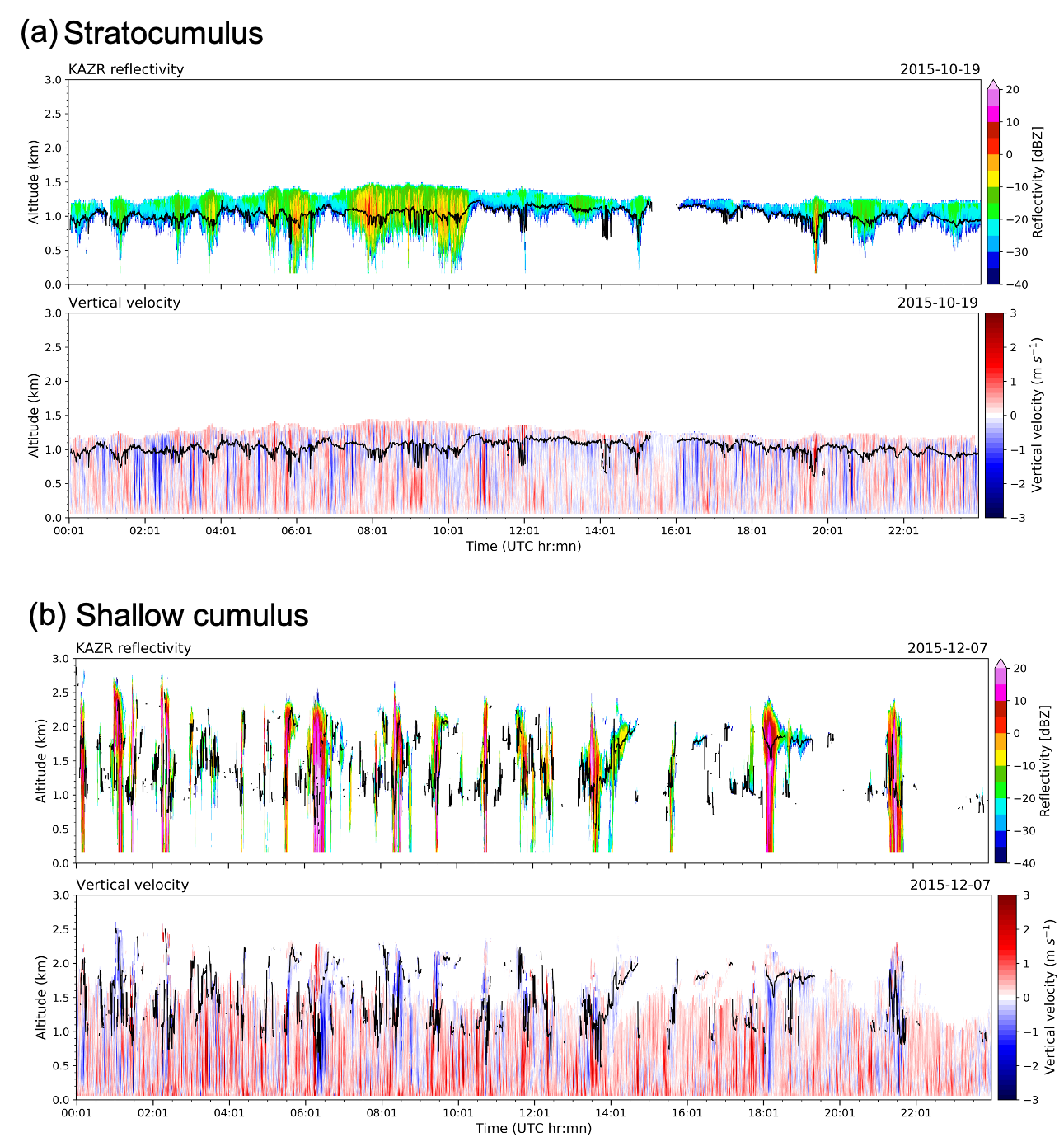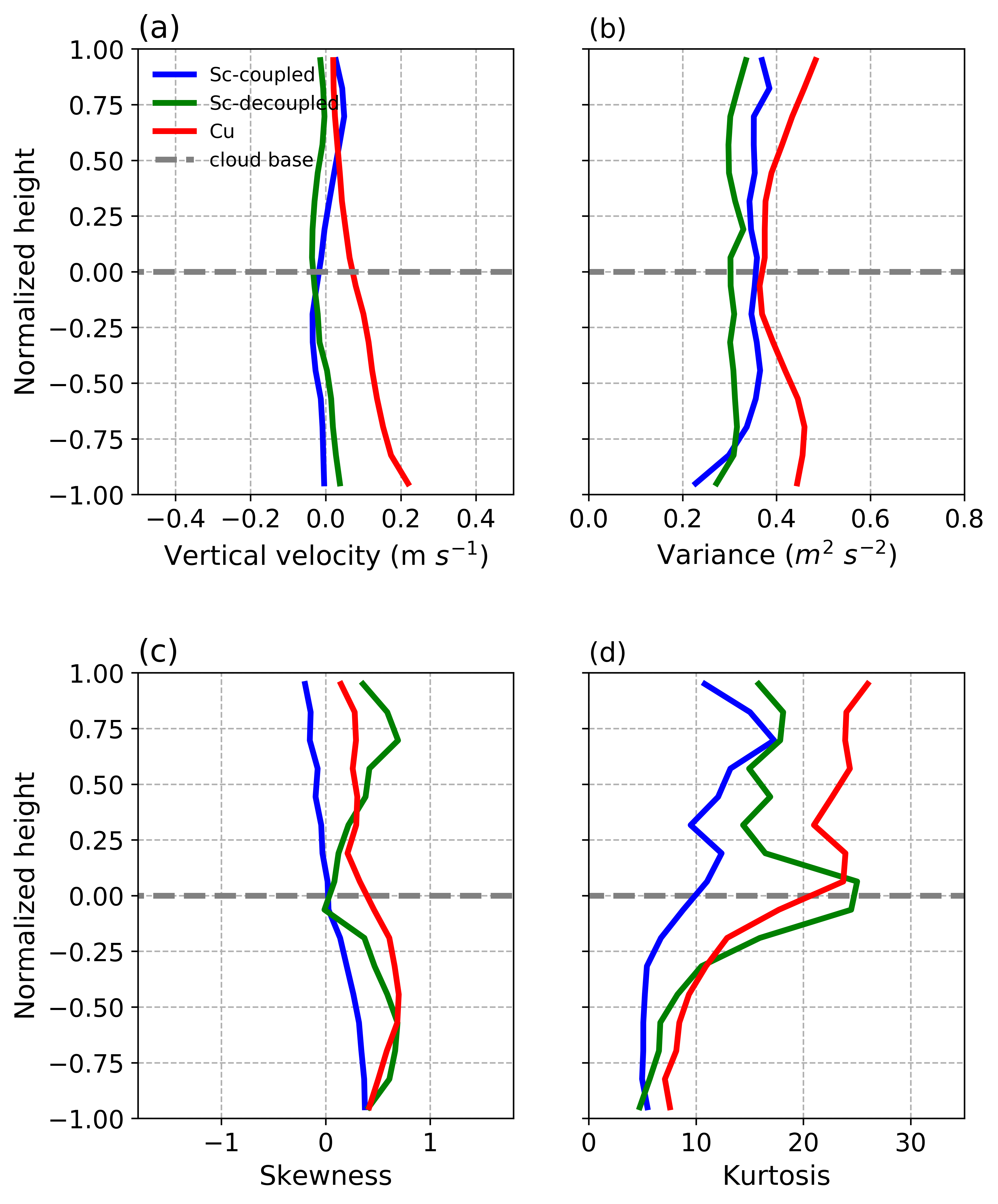Distinct dynamical properties of low clouds
Submitter
Witte, Mikael — Naval Postgraduate School
Jeong, Jong-Hoon — University of California, Los Angeles
Area of Research
Cloud Processes
Journal Reference
Jeong J, M Witte, I Glenn, M Smalley, M Lebsock, K Lamer, and Z ZHU. 2022. "Distinct dynamical and structural properties of marine stratocumulus and shallow cumulus clouds in the Eastern North Atlantic." Journal of Geophysical Research: Atmospheres, 127(19), e2022JD037021, 10.1029/2022JD037021.
Science

Figure 1. Time series of radar reflectivity and retrieved vertical velocity measured at the ARM ENA site for (a) stratocumulus cases (19 October 2015) and (b) shallow cumulus cases (7 December 2015). From journal.

Figure 2. The figure shows that the first four moments of vertical velocity distribution were distinct as a function of cloud types (stratocumulus and shallow cumulus clouds) and thermodynamical environments (coupled and decoupled states). From journal.
Marine low clouds over the ocean are critical to the climate system. These clouds have air motion in them at spatial scales smaller than the grid size of current global models. What statistical features of low-cloud dynamics using long-term remote-sensing observation?
Impact
Our findings suggest that care must be taken when interpreting island-based observations as representative of a generic marine dynamic environment.
Summary
We identified the two marine boundary-layer clouds (e.g., stratocumulus and shallow cumulus clouds). These two clouds have distinct dynamical characteristics for the first four moments of the vertical velocity (w) distributions. Also, we found a strong dependence of subcloud mean w depending on near-surface horizontal wind direction.
Keep up with the Atmospheric Observer
Updates on ARM news, events, and opportunities delivered to your inbox
ARM User Profile
ARM welcomes users from all institutions and nations. A free ARM user account is needed to access ARM data.


















